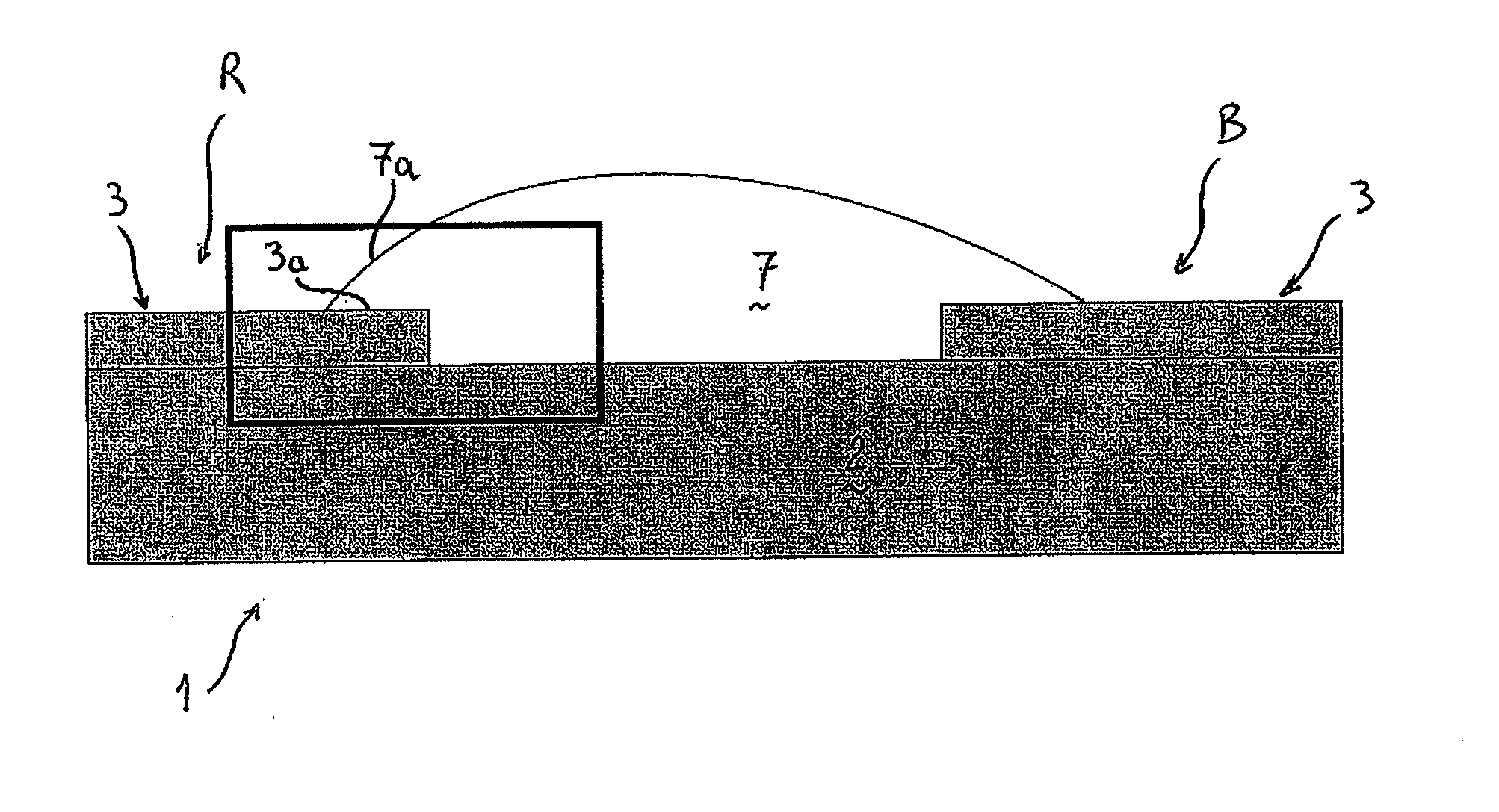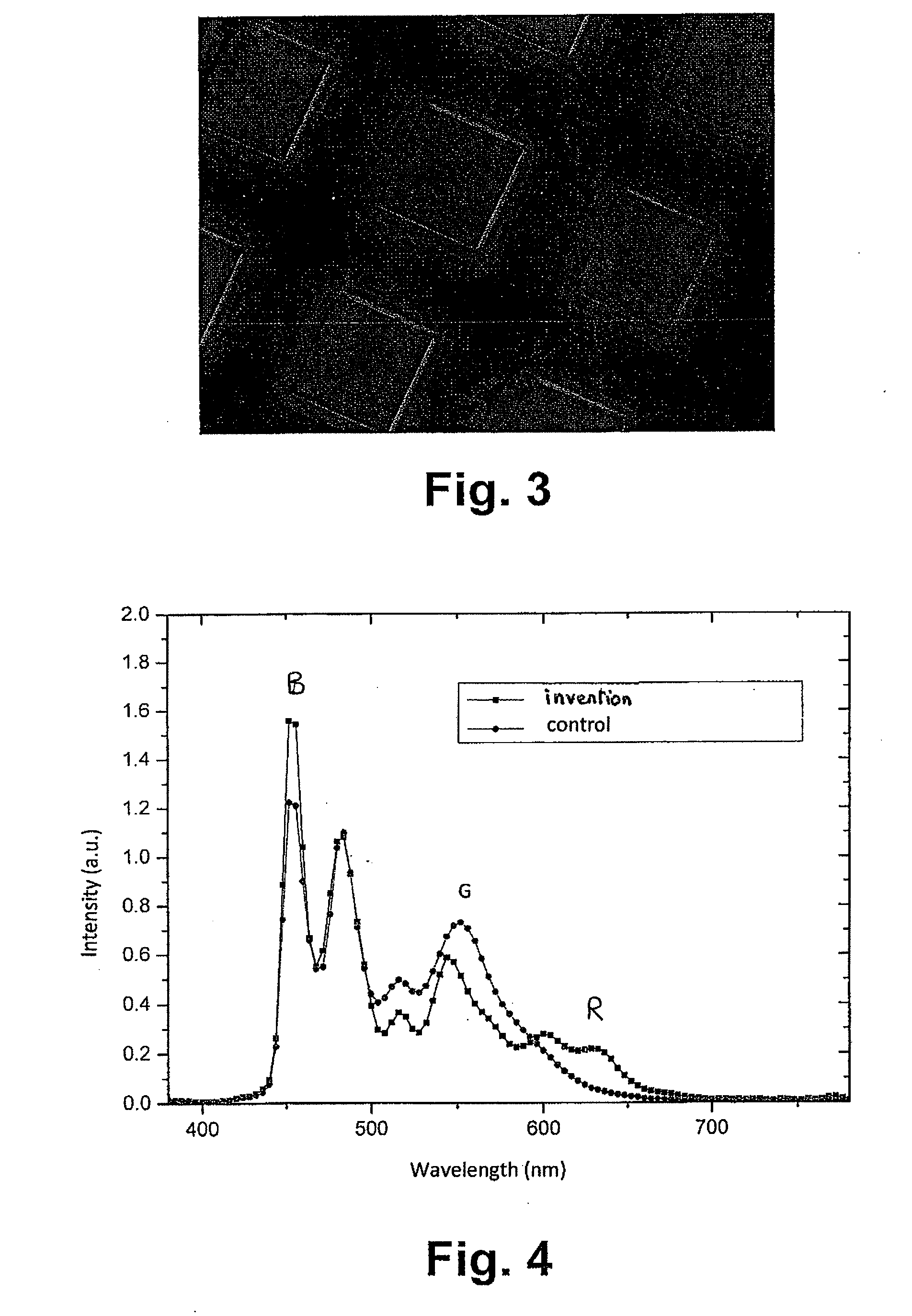Electronic Display Device Having An Electroluminescent Screen and Its Fabrication Process
a technology of electroluminescent screen and electronic display device, which is applied in the manufacture of electrode systems, electric discharge tubes/lamps, and discharge tubes based on small molecules. it is impossible to microstructure small molecules with conventional microelectronic technology, and the aperture of each subpixel is increasing
- Summary
- Abstract
- Description
- Claims
- Application Information
AI Technical Summary
Benefits of technology
Problems solved by technology
Method used
Image
Examples
Embodiment Construction
[0032]The following description of the invention given with reference to FIGS. 1 and 2 relates to a polychromatic microdisplay but it will be noted that it could equally apply to a monochromatic microdisplay on condition that the subpixels be replaced with pixels.
[0033]The polychromatic microdisplay 1 according to the invention during fabrication, schematized in FIGS. 1 and 2, is an OLED microdisplay and it comprises a substrate 2, for example made of silicon, coated with an active matrix of pixels, two adjacent subpixels, or colour dots, R and B of which are identified in FIG. 1, for each pixel, by their near base electrode 3, i.e. near relative to the substrate 2, which base electrode is chosen to be transparent or semitransparent and that plays the role, for example, of an anode. This array of base electrodes 3, defining the set of subpixels R, G, B of each pixel, surmounts, in a known way, an integrated circuit structure of the substrate 2 that serves to address each pixel and t...
PUM
 Login to View More
Login to View More Abstract
Description
Claims
Application Information
 Login to View More
Login to View More - R&D
- Intellectual Property
- Life Sciences
- Materials
- Tech Scout
- Unparalleled Data Quality
- Higher Quality Content
- 60% Fewer Hallucinations
Browse by: Latest US Patents, China's latest patents, Technical Efficacy Thesaurus, Application Domain, Technology Topic, Popular Technical Reports.
© 2025 PatSnap. All rights reserved.Legal|Privacy policy|Modern Slavery Act Transparency Statement|Sitemap|About US| Contact US: help@patsnap.com



